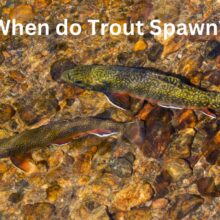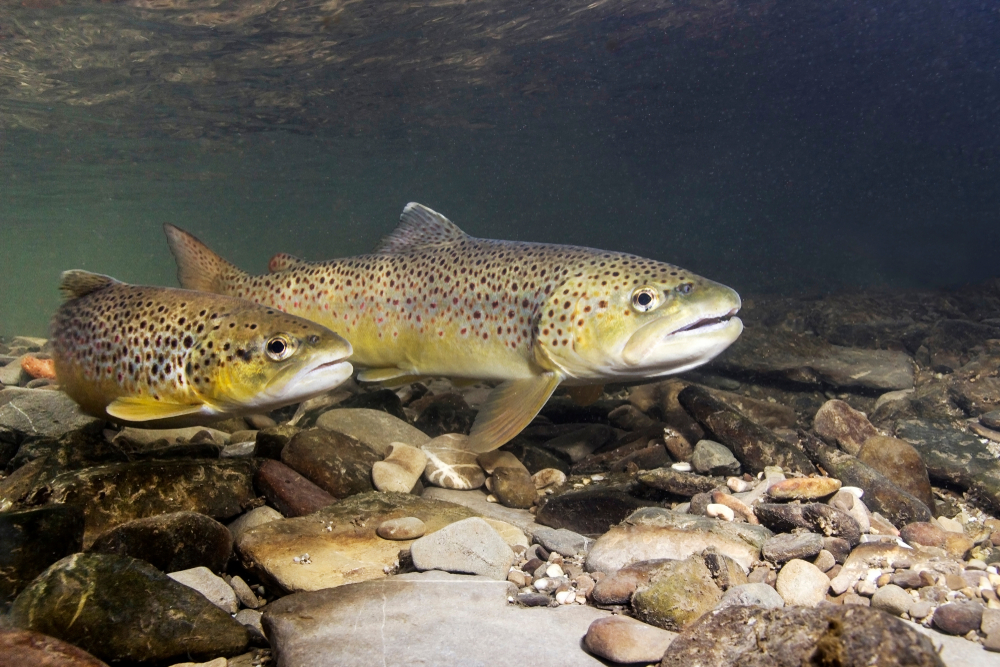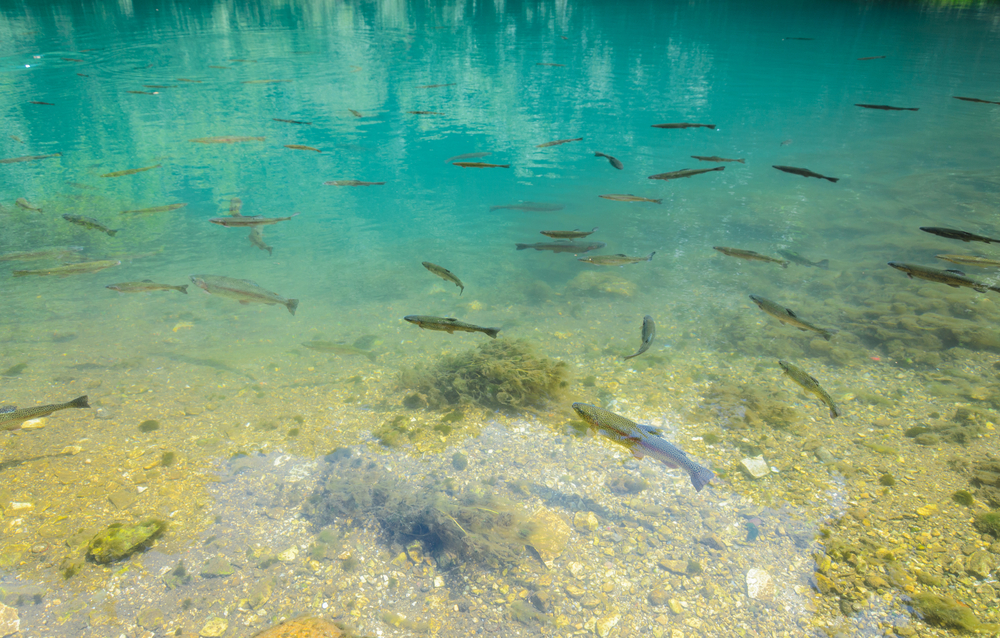This article may contain affiliate links. If you make a purchase after clicking on a link we may earn a small commission at no extra cost to you. As an Amazon Associate, I earn from qualifying purchases.
When do Trout Spawn?

Fishing for trout is a popular pastime for many anglers around the world, but it’s important to understand when the trout spawn to ensure that we’re not disrupting their natural breeding process.
Knowing when trout spawn can also help anglers plan their fishing trips more effectively. In this article, we will explore when trout spawn, the signs of trout spawning, and the importance of protecting trout spawning sites.
Understanding the Spawning Process
Trout spawning is the process by which trout reproduce and create the next generation of fish. It occurs when male and female trout release their eggs and sperm into the water, which then fertilizes the eggs.
Trout spawning typically occurs during the fall and winter months, depending on the species and the location.

There are a number of factors that influence the timing of trout spawning, including water temperature and daylight length. As water temperatures begin to cool in the fall, male trout begin to develop small hooks on their jaws and females begin to develop eggs.
The spawning season typically lasts for several weeks, during which time the trout will mate and lay their eggs.
During the spawning process, trout will typically move to specific areas of their habitat, such as shallow riffles in streams or gravel beds in rivers, to lay their eggs. These areas provide the necessary conditions for the eggs to develop and hatch into young trout.
Understanding the trout spawning season and the behaviors associated with it is crucial for anglers to ensure that they are not interfering with the natural breeding process of the fish.
It is also important for conservationists to monitor the spawning habits of trout in order to protect their habitats and ensure the health of local fish populations.
Signs of Trout Spawning
During the trout spawning season, there are several physical changes and behaviors that can be observed in the fish. Some of the signs of trout spawning include:
- Coloration changes – Male trout often become more colorful during spawning season, developing brighter and more vibrant hues in order to attract females.
- Hooked jaws – Male trout develop small hooks on their jaws, which are used to hold onto females during the spawning process.
- Nesting behavior – Trout will often create nests, or “redds”, in shallow gravel beds or riffles in streams and rivers. These nests are used to lay and fertilize the eggs.
- Aggressive behavior – Male trout become more territorial and aggressive during spawning season, often chasing away other fish from their nesting sites.
- Mating behavior – Trout will pair up and engage in a spawning dance, where the female will lay her eggs while the male fertilizes them with his sperm.
Observing these behaviors and physical changes can provide valuable insights into the trout spawning process, but it’s important to remember to not disturb the fish during this crucial time in their life cycle.
When Do Trout Spawn?
The timing of trout spawning season can vary depending on the species of trout and the location. Generally, the spawning season for most trout species occurs during the winter and spring months.
In some areas, trout may begin to spawn as early as December, while in other areas, spawning may not begin until March. Water temperature and daylight length are two of the most important factors that influence the timing of trout spawning.

When water temperatures begin to cool in the fall, typically below 50°F (10°C), it triggers the hormonal changes in trout that prepare them for spawning.
In addition to water temperature, the length of daylight also plays a role in triggering the spawning process. As the days get shorter in the fall, it signals to the trout that it is time to begin the spawning process.
The spawning season for trout can last for several weeks, during which time the fish will mate and lay their eggs. It’s important for anglers to be aware of the timing of trout spawning season in their area, so they can avoid disturbing the fish during this crucial time in their life cycle.
Where Do Trout Spawn?
Trout will typically spawn in specific areas of their habitat, such as streams and rivers. These areas provide the necessary conditions for the eggs to develop and hatch into young trout. Some of the common spawning sites for trout include:
- Gravel beds: Trout will often lay their eggs in gravel beds in streams and rivers, where the eggs can be protected from predators and receive adequate oxygen and water flow.
- Riffles: Shallow, rocky areas of streams and rivers with a fast current, known as riffles, provide ideal spawning habitat for trout.
- Springs: Spring-fed streams provide a consistent flow of clean, cool water that is ideal for trout spawning.
- Tributaries: Small tributaries that feed into larger rivers and streams can also provide good spawning habitat for trout.
It’s important to note that trout will typically return to the same spawning sites year after year, so protecting these areas is crucial for the long-term health of the fish population.
Disturbing spawning sites during the spawning season can result in damage to the eggs and disrupt the natural breeding process of the fish.
The Importance of Protecting Trout Spawning Sites
Protecting trout spawning sites is crucial for the long-term health and sustainability of trout populations. These areas are vital for the natural breeding process of the fish and disrupting the spawning process can have serious consequences for the future of the species.
There are several ways that we can protect trout spawning sites, including:
- Reducing pollution: Pollution from sources such as agriculture, industry, and urban runoff can have a negative impact on water quality, which can harm trout and their spawning sites. Reducing pollution through proper waste management and conservation practices can help protect spawning habitats.
- Regulating fishing: It’s important for anglers to be aware of the timing of trout spawning season in their area and to avoid fishing in spawning habitats during this time. Additionally, implementing catch-and-release practices can help ensure that the fish are able to complete the spawning process and contribute to the next generation of trout.
- Habitat restoration: Restoring degraded spawning habitats, such as gravel beds and riffles, can help improve the health and productivity of trout populations. This can include measures such as adding gravel or boulders to streams and rivers to create better spawning habitat.
By protecting trout spawning sites, we can help ensure the long-term health and sustainability of these important fish populations. It’s important for anglers, conservationists, and policymakers to work together to protect and preserve these critical habitats.
Conclusion
In conclusion, understanding when and where trout spawn is crucial for anglers and conservationists alike. Knowing when trout spawn can help anglers plan their fishing trips more effectively and ensure that they are not disrupting the natural breeding process of the fish.
It’s also important to protect trout spawning sites in order to ensure the long-term health and sustainability of these important fish populations.
By reducing pollution, regulating fishing, and restoring degraded habitats, we can help protect and preserve the critical spawning habitats that trout rely on. With careful management and conservation efforts, we can ensure that these magnificent fish continue to thrive in our rivers and streams for generations to come.
